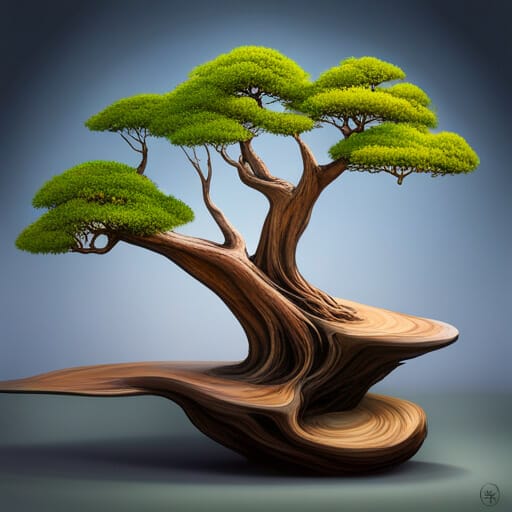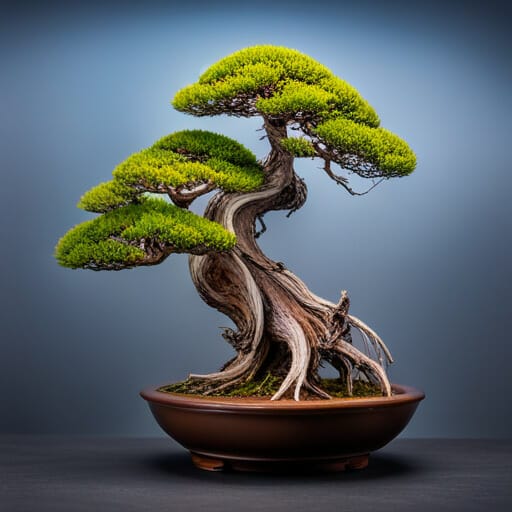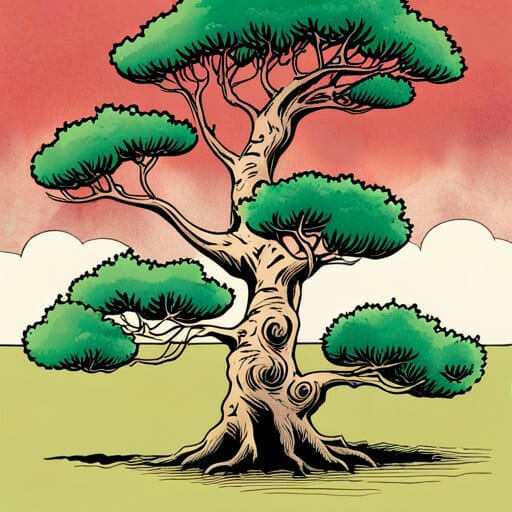According to recent statistics, the art of bonsai has gained significant popularity among gardening enthusiasts, with a growing interest in reviving and creating unique bonsai trees.
One technique that has captured the attention of bonsai enthusiasts is the Tanuki technique, also known as the ‘other tree’ technique. This method involves attaching a living tree to a piece of deadwood, resulting in the illusion of a mature bonsai tree.
The Tanuki technique offers several benefits, including the ability to revive dead bonsai trees and create the appearance of age in a shorter period of time. However, it is important to note that this technique requires prior experience with bonsai care and grafting techniques.
This article will explore the basics of the Tanuki technique, including its benefits and considerations, providing valuable information for those interested in reviving and creating bonsai trees using this unique method.
Contents
- 1 Quick Points
- 2 What is it?
- 3 Technique Basics
- 4 Benefits and Considerations
- 5 Frequently Asked Questions
- 5.1 Can any type of tree be used for the Tanuki bonsai technique, or are there specific types that work better?
- 5.2 How long does it typically take for a Tanuki bonsai tree to fully integrate and appear as a mature tree?
- 5.3 Are there any specific care instructions or techniques that should be followed to ensure the success of a Tanuki bonsai tree?
- 5.4 Can the Tanuki bonsai technique be used to revive bonsai trees that are not completely dead, but struggling or in poor health?
- 5.5 Are there any limitations or drawbacks to using the Tanuki bonsai technique compared to other methods of bonsai making?
Quick Points
- The Tanuki technique involves attaching a living tree to deadwood to create the illusion of a mature bonsai tree.
- Benefits of the Tanuki technique include reviving dead bonsai trees and creating the appearance of age in a shorter time.
- The technique requires prior experience with bonsai care and grafting techniques.
– Proper selection of living tree and deadwood pieces is essential for success.
What is it?

The Tanuki bonsai technique involves attaching a living tree to a piece of deadwood, typically using grafting techniques, to create a new bonsai tree that appears older and more mature.
In the past, Tanuki bonsai was commonly made by grafting Shimpaku juniper onto a different tree due to the scarcity of suitable trees for bonsai making. However, nowadays, Tanuki bonsai refers to the practice of attaching a living tree to a dead tree to create the illusion of an older tree.
This technique allows for the creation of a mature-looking bonsai tree in a shorter period of time compared to other methods. Junipers are often preferred for Tanuki bonsai due to their unique deadwood features and ability to withstand shaping.
However, it is important to note that the Tanuki bonsai technique is not recommended for beginners, as it requires prior experience with bonsai care and grafting techniques. Proper selection of living tree and deadwood pieces is essential for the success of this technique.
Technique Basics

One key aspect of the Tanuki bonsai technique involves integrating a living tree with deceased wood, breathing new life into the lifeless remains. This technique allows for the creation of a mature-looking bonsai tree in a shorter period of time compared to other methods.
The process begins by selecting the right pieces of living tree and deadwood, which is crucial for the success of the technique. The living tree is carefully attached to the deadwood, creating the illusion of an older tree. Junipers are often chosen for this technique due to their unique deadwood features and their ability to withstand shaping.
However, it is important to note that the Tanuki bonsai technique is not recommended for beginners, as it requires prior experience with bonsai care and grafting techniques.
Overall, this method offers a way to revive dead bonsai trees and create visually appealing, mature-looking trees.
Benefits and Considerations

An advantage of utilizing the Tanuki bonsai technique is the ability to create the aesthetic of a mature bonsai tree without the need for extensive time and growth.
This technique allows for the revival of dead bonsai trees, breathing new life into them by attaching a living tree to a piece of deadwood.
The Tanuki bonsai technique also offers the opportunity to create visually appealing bonsai trees by combining unique deadwood features of junipers with the ability to withstand shaping.
However, it is important to note that this technique is not recommended for beginners, as it requires prior experience with bonsai care and grafting techniques.
Additionally, selecting the right pieces of living tree and deadwood is crucial for the success of the Tanuki bonsai technique.
Frequently Asked Questions
Can any type of tree be used for the Tanuki bonsai technique, or are there specific types that work better?
The Tanuki bonsai technique is most successful with certain tree types, such as junipers, due to their unique deadwood features and ability to withstand shaping. However, not all trees are suitable for this technique.
How long does it typically take for a Tanuki bonsai tree to fully integrate and appear as a mature tree?
The integration and appearance of a tanuki bonsai tree as a mature tree can vary, but it typically takes several years. Factors such as the type of tree, growth rate, and care provided can influence the timeline of achieving a mature look.
Are there any specific care instructions or techniques that should be followed to ensure the success of a Tanuki bonsai tree?
To ensure the success of a Tanuki bonsai tree, it is important to follow specific care instructions and techniques. These include selecting suitable pieces of living tree and deadwood, proper grafting techniques, and prior experience with bonsai care.
Can the Tanuki bonsai technique be used to revive bonsai trees that are not completely dead, but struggling or in poor health?
Yes, the Tanuki bonsai technique can be used to revive bonsai trees that are struggling or in poor health. By attaching a living tree to a piece of deadwood, the technique can provide a new source of nutrients and support for the struggling tree.
Are there any limitations or drawbacks to using the Tanuki bonsai technique compared to other methods of bonsai making?
One limitation of the Tanuki bonsai technique compared to other methods is the need for prior experience with bonsai care and grafting techniques, making it unsuitable for beginners.




